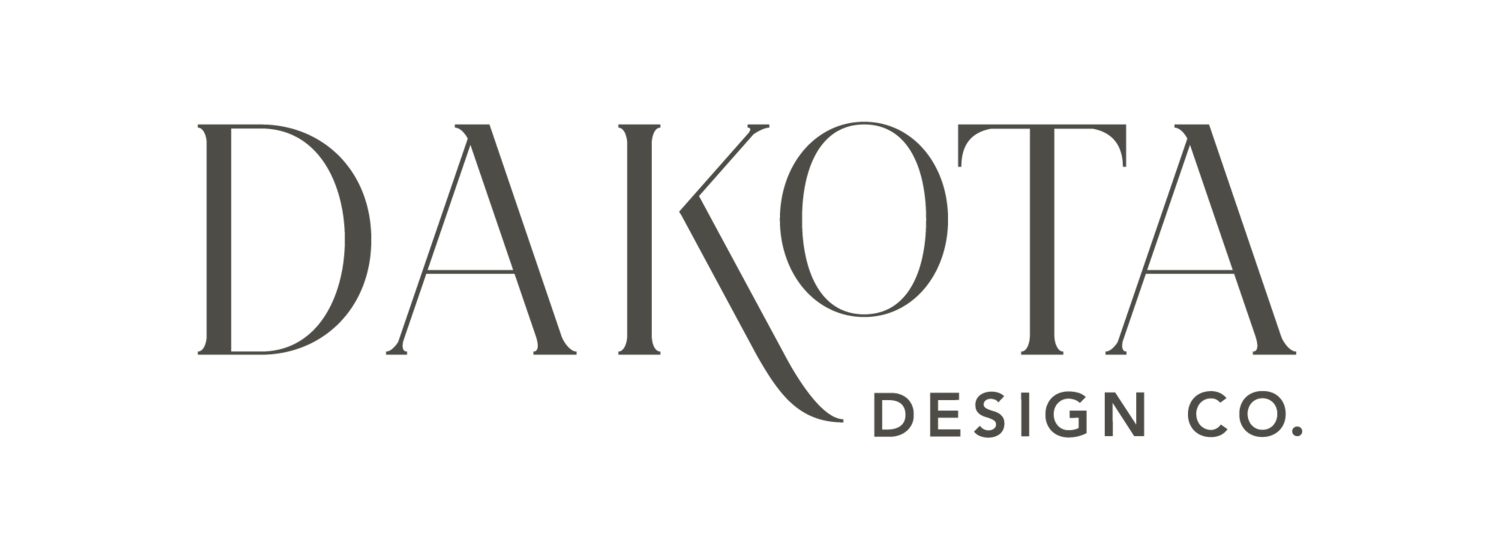Welcome to The DTS Files for Interior Designers
The DTS Files is a premium content hub for interior designers who want to grow their businesses with expert-backed strategies, real-world consulting insights, and proven frameworks.
Want full access? Subscribe now to unlock all premium content.
Already a member? Log in, then scroll down to the blog to read.
|
ACTIONABLE BUSINESS STRATEGIES
I
MEMBERS-ONLY ARTICLES PUBLISHED WEEKLY
|
PRIVATE LIBRARY OF EXPERT INSIGHTS & ADVICE FOR INTERIOR DESIGNERS
| ACTIONABLE BUSINESS STRATEGIES I MEMBERS-ONLY ARTICLES PUBLISHED WEEKLY | PRIVATE LIBRARY OF EXPERT INSIGHTS & ADVICE FOR INTERIOR DESIGNERS

Our Ten Favorite Blog Posts For Interior Designers in 2024
In 2024, my team and I wrote 49 original blog posts for interior designers (this one makes it 50). That’s a big dip from 2023, when we wrote 90 original posts (based on our own experience!!). What can I say? We love nothing more than sharing insights to help interior designers improve their business operations and client experience.
While we didn’t write as many blog posts this year, we introduced plenty of new ways to help interior designers through our trainings in The Workroom. This year’s highlights included:
Beyond Retail: Increase Revenue + Profits by Selling Wholesale Furnishings
Elevate Your Design Presentation live training
Permits to Punchlists: Essential Construction Training, Management, & Pricing Tips for Interior Designers
And I can’t forget to mention the three cohorts of our signature program, The Designed to Scale® Method. What an honor to help so many designers through my tried & true framework.
If you haven’t had a chance to dive into those resources linked above, I highly recommend checking them out. In the meantime, don’t miss our 10 most popular blog posts of 2024. These are the posts that resonated most with our community of interior designers—each one thoughtfully crafted, 100% human-written, with no shortcuts or AI assistance here.
And, of course, a huge thank you for being here, reading my blog, The Weekly Install®, The Design Brief™, and my Instagram posts.
YOU fuel everything we do.
Alright, let’s count down the top 10 posts of the year.
Ten Interior Designers Share How They Handle Scope Creep
As an interior designer, when a client trusts you - THAT.IS.EVERYTHING!
And we also know that project lines can often get blurred.
Sometimes, this is fine. Designers can easily expand the scope to add in a selection or two. Other times, it’s not. Projects become overwhelming, and there is no end in sight.
I have my own recommendations on how to handle scope creep to ensure it’s a positive experience for both the client and the design business. But, we also wanted to hear from designers on this topic so we asked designers to share their own experiences and philosophies on scope creep. We are so excited to share their responses (with their permission).
Learn how designers handle scope creep, whether hosting a proposal meeting is helpful in reducing scope creep, and the contract terms to include to make sure you’re covered when (not if) this happens. Plus get tips from ten designers on what they do and say to clients when scope is added to a project.
Dear Dakota | Is It Okay To Stop Growing My Interior Design Business
Dear Dakota,
Is it okay to stop growing my business?
Join The DTS Files for my advice and insights and to find out what stage your business is in.
The Design Brief™ | Volume VII | Effective Interior Design Lighting Strategies for Stunning Interiors
The key to impactful lighting design is truly layering. To appreciate the impact of layering to an impressive lighting scheme, let’s consider the opposite:
A kitchen that is lit by just one center surface-mounted fluorescent fixture
A bathroom lit solely by a three-bulb fixture over the mirror
An elementary classroom that is uniformly lit throughout by strip fluorescents—very effective for its intended purpose, but not at all interesting
A well-designed lighting scheme that adds beauty to a space needs to include a visual hierarchy of light levels: ambient lighting in most areas, but other areas with pools of light for visual interest.
By layering lighting, you are not just lighting the air in a room, you are often lighting walls, a ceiling, art pieces, surfaces, and other elements of interest, and letting that light bounce back into the space. You are deliberately putting higher intensity light levels in some areas, and lessening it in others.
Perhaps it is because nature contains different light levels—across the landscape and over the progression of time—that we are intrinsically drawn to a variation and disparity in light levels within our visual panorama. It speaks to our biological need for stimulation and relief from monotony.
Not only do we derive satisfaction from seeing natural elements and the changing landscape that evolves over the passage of hours, days, and months, but light greatly impacts human health and well-being. Countless studies over the last 50 years have confirmed the link between natural light and healing and recovery.
It is also interesting to consider that there are really only three sources of light: the sun, fire, and electrification. Until 150 years ago—when Thomas Edison developed the first practical type of incandescent lighting in 1879—the sun and fire were the only available sources for millennia. Our ancestors were subject to substantial risk from kerosene lamps, candles, and other sources of fire-produced light to illuminate their homes after the sun went down.
Today, great advancements in solid-state lighting, such as LEDs mean that we can have an abundance of light quality, sources, and effects. Light—natural or electrified—manipulates mood, enhances functionality, encourages activity, and enhances visual interest in our surroundings.
So, let’s look at how to manipulate light—both natural daylight from the sun, and electrified (artificial) light—to create environments that are optimally pleasing to our visual senses.
Join The DTS Files to learn how to layer lighting in your next interior design project.
Complete Your CEUs and Plan Your Educational Goals for Your Interior Design Business
For all of us, the end of the year marks the time when we either 1 ) scramble to get things done that we promised ourselves we would check off our list OR 2 ) we call it a loss and start planning for the year ahead.
If you fall into camp #1, this means you might be approaching deadlines that force YOU to finish things you MUST do before year’s end.
CEUs (continuing education units) are that way. YIKES! Along comes the end of the year, and you realize you haven’t completed the CEUs that are required.
Many interior designers DO NOT have a requirement to complete and document CEUs. But, we are team education over here and believe it is ALWAYS good to learn new things and keep your existing skills honed.
Everyone can benefit from increasing their own competencies and knowledge!
So, if you’re scrambling to complete your CEU requirements for the current year, OR if you’re looking ahead to the upcoming year and want to plan your educational and/or upskilling goals, this post is for you.
We’ll address:
Who may need to complete CEUs
How CEUs should be tracked and reported
Where CEUs can be found (who offers them)
How to achieve your educational goals if you do not have a CEU requirement
The Design Brief™ | Volume VI | Dr. Gloria’s Favorite Interior Design Books for Residential Interior Designers
I have always been someone who looks to books when I need to increase my understanding of a topic. Years ago, when I got a puppy, I bought several books on raising a dog. I enhanced my gardening knowledge by reading several books on flower gardening specific to my climate (north and cold!!!!). In today’s age, where an immediate Google search on any topic can provide a wealth of information from various sources, I still feel like there is nothing like reading a good book that dives deep into a single topic of interest.
I’m sure that Amazon loves me for the plethora of books I purchase every year. And when it comes to topic knowledge, it HAS to be the hard copy variety which can be easily referenced, dog-eared, and highlighted.
And what do physical books have over online content? They include everything an author has to convey about a topic in a thorough, comprehensive, and systematic format. And they are always readily at hand on your bookcase.
I LOVE books!! I LOVE design! And I LOVE books about design.
As a tenured college professor (following my 20+ year interior design career, I have taught interior design at three different Midwest universities over the last 14 years), I have read or reviewed countless interior design textbooks to determine the very best, most thorough, and most understandable on a wide variety of design topics.
Often, interior designers ask me and Katie where they might find training classes on interior design principle specific topics they feel deficient in. My response is often to recommend a high-quality textbook on the subject. It’s a cheaper training option that has permanence in that the material remains always at your fingertips.
Without further adieu, here are my top book picks for residential interior designers.
How I **TRY** to Protect My Business from Copyright Infringement, Plagiarism, & Intellectual Property Theft
One unfortunate reality of living and working in the digital age is that it opens wide the opportunity for people to engage in intellectual theft. The National Crime Prevention Council has reported that more than 45% of all U.S. businesses have suffered losses due to intellectual property theft.
Almost half! 😖
All a person needs to do is visit a website and download or copy some content—whether it’s an artistic creation, written subject matter, or a saleable product.
Often, the creator or business owner is unaware this has even occurred, while the thief benefits by presenting the content as their own without putting in the actual effort or actually owning the content.
In the two months prior to the writing of this blog, we at Dakota Design Company have identified SIX separate instances where designers have used our intellectual property without permission. These instances included people selling our materials, using our copyrighted content in their competing services, or providing our templates as bonuses inside of their paid programs.
SIX cases. In two months.
I’m sharing this with you, my DDC community, because I know you care about the integrity and ethical standards of our industry. I’m also sharing because we’ve had to devote significant time and resources to managing these situations, from collecting evidence, engaging legal services, and creating processes to further protect our IP.
Join The DTS Files for my advice and insights.
The Design Brief™ | Volume V | Everything interior designers need to know about LED lighting
Interior designers need to understand the attributes of LED lighting to make informed choices about both lamps (commonly referred to as light bulbs) and luminaires (commonly referred to as lighting fixtures). Lighting can elevate and transform an environment, and with the increased complexity of LED technology, and the related energy-efficiency building codes, being a well-informed designer is critical.
Why Are LEDs Becoming Universally Used?

ACCESS A PRIVATE LIBRARY OF EXPERT ADVICE for INTERIOR DESIGNERS
My strategies have shaped the way thousands of interior designers and luxury service providers do business.
Inside The DTS Files, you’re getting the original insights straight from the source—tested, refined, and backed by my experience working with 100+ design firms.
And because this is a members-only space, I can go deeper than ever before—sharing the real strategies that help designers build profitable, sustainable businesses with confidence.

HEAR FROM SOME OF OUR MEMBERS:

Not Ready to Subscribe? Start here.
PRICING PLAYBOOK for INTERIOR DESIGNERS
The Complete Guide to Pricing Your Design Services
Grab my pricing playbook, The Complete Guide to Pricing your Interior Design Services, to learn:
the six most common pricing models for designers
who each one is best for, and
how to know if your pricing model is broken
NEED BUSINESS SUPPORT ASAP?
SHOP TEMPLATES
Plug-and-play templates, questionnaires, processes, and guides for interior designers who want to stop reinventing the wheel with every new project.
The Design Library helps you streamline client communication, set clear expectations, and protect your time—so you can spend less time in your inbox and more time designing. Inside, you’ll find:
✔ Professionally written client emails and marketing guides for every step of the process.
✔ SOPs to standardize service delivery and create a seamless, high-end experience.
✔ Contract templates with sample scopes to protect you, your team, and your clients.
What took me years to refine can be in your inbox in minutes.
*for interior designers only, not interior design business coaches, consultants, mentors, strategists.
SHOP WORKSHOPS & TRAININGS
Learn from my team (comprised of industry experts and educators) and me all the things they don’t teach in design school. And we know because two of the women on my team went to interior design school!
After consulting with and doing hands-on implementation for over 100 interior design business owners, I’ve seen what works (and doesn’t) across every business model imaginable. We are familiar with various software types, team structures of 1 to 20, and the challenges that are coming, whether you’re on your way to your first $100,000 or already making multiple millions.
On-demand trainings for your busy schedule.
*for interior designers only, not interior design business coaches, consultants, mentors, or strategists.
JOIN 16,000 DESIGNERS EVERY FRIDAY
Proven strategies and tools to streamline and elevate your interior design business.

COMPLIMENTARY QUIZ FOR INTERIOR DESIGNERS
Feeling stretched thin in your design business?
You’re busy—but is your business actually working for you? If you’re constantly putting out fires and second-guessing what to focus on next, this 2-minute quiz will show you exactly where to start.



























